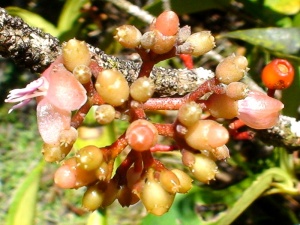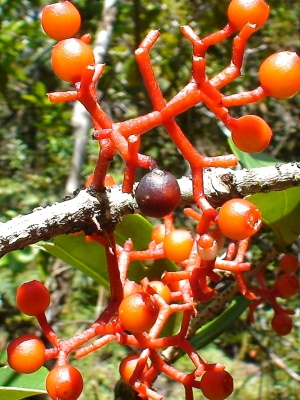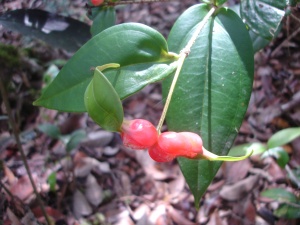Difference between revisions of "Buaq tegkang"
Jump to navigation
Jump to search
| Line 32: | Line 32: | ||
#[[Wikipedia:Ethnobotany|Ethnobotany]] of the Iban & Kelabit by Hanne Christensen | #[[Wikipedia:Ethnobotany|Ethnobotany]] of the Iban & Kelabit by Hanne Christensen | ||
#[http://www.kew.org/herbarium/brunei/fams/68.htm#MEDINILLA Kew Herbarium] | #[http://www.kew.org/herbarium/brunei/fams/68.htm#MEDINILLA Kew Herbarium] | ||
| + | #External image [http://biodiversity.sci.kagoshima-u.ac.jp/suzuki/Brunei/Herbarium/90/K13594.jpg http://biodiversity.sci.kagoshima-u.ac.jp] | ||
[[Category:B|buaq tegkang]] | [[Category:B|buaq tegkang]] | ||
[[Category:Edible Fruit| Buaq tegkang]] | [[Category:Edible Fruit| Buaq tegkang]] | ||
Revision as of 21:01, 18 January 2008
Pronunciation
Bu-aq Teg-kang
Common Name
- Kelabit
- Buaq Tegkang (Bua Tagkang)
- English
- ?
- Malay
- ?
Encyclopedic info
- Scientific name
- medinilla crassifolia (1)
- English
- A type of shrub that grows wild. It has pink berries, and when ripe turns dark red. It has a sour taste.
- Epiphytic; treelet, shrub, herb, climber · VEG: Peatswamp Forest, Kerangas Forest with Agathis, LMDF, HDF, Upper Montane Forest, Secondary Forest · HAB: gentle slope, terrace, ridge; periodically flooded; near running fresh water, near still fresh water · GEO: Belait formation, Meligan formation, shale, Sand/clay, Sand, Setap Shales; clay soil; peat · ALT: 300 m (2)
- Fruit is edible (1)
- Malay
- Sejenis pokok belukar liar. Buahnya berbiji-biji, berwarna merah jambu, dan apabila masak berwarna merah gelap. Rasa buahnya masam.
References
- Ethnobotany of the Iban & Kelabit by Hanne Christensen
- Kew Herbarium
- External image http://biodiversity.sci.kagoshima-u.ac.jp


